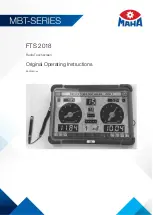
Basic Electricity
1:13
CP 1 – Cathodic Protection Tester Course Manual
©
NACE International, 2000
02/01/05
Turn now to Group Exercise 1.2 for further practice with series
circuits.
Parallel Circuit
In a parallel circuit (Figure 1.7), the current divides into a number of
separate branches. Each branch may have a different resistance; thus,
the value of the current in each branch may be different. Voltage
drop across each element or source in the circuit is the same. If you
can trace more than one path for current to flow through the circuit,
you have a parallel circuit.
Galvanic anodes attached to a structure represent a parallel circuit.
The same is true for impressed current anodes: the more anodes you
add, the lower the resistance to the electrolyte and the more current
you get.
For a parallel circuit:
•
Voltage drop across each branch is the same and is equal to
source voltage.
•
Total current flowing into and out of the junction point of the
branches equals the sum of branch currents (Kirchhoff’s Current
Law).
•
Total (equivalent) resistance is equal to the reciprocal of the sum
of the reciprocals of the individual resistances.
•
The total (equivalent) resistance is always less than the smallest
resistance in the circuit.
Summary of Contents for CP 1
Page 1: ...CP 1 Cathodic Protection Tester Course Manual February 2005 NACE International 2000 ...
Page 265: ......
Page 266: ......
Page 267: ......
Page 268: ......
Page 301: ...RP0169 2002 32 NACE International ISBN 1 57590 035 1 ...
Page 535: ...TM0101 2001 24 NACE International ISBN 1 57590 137 4 ...
















































